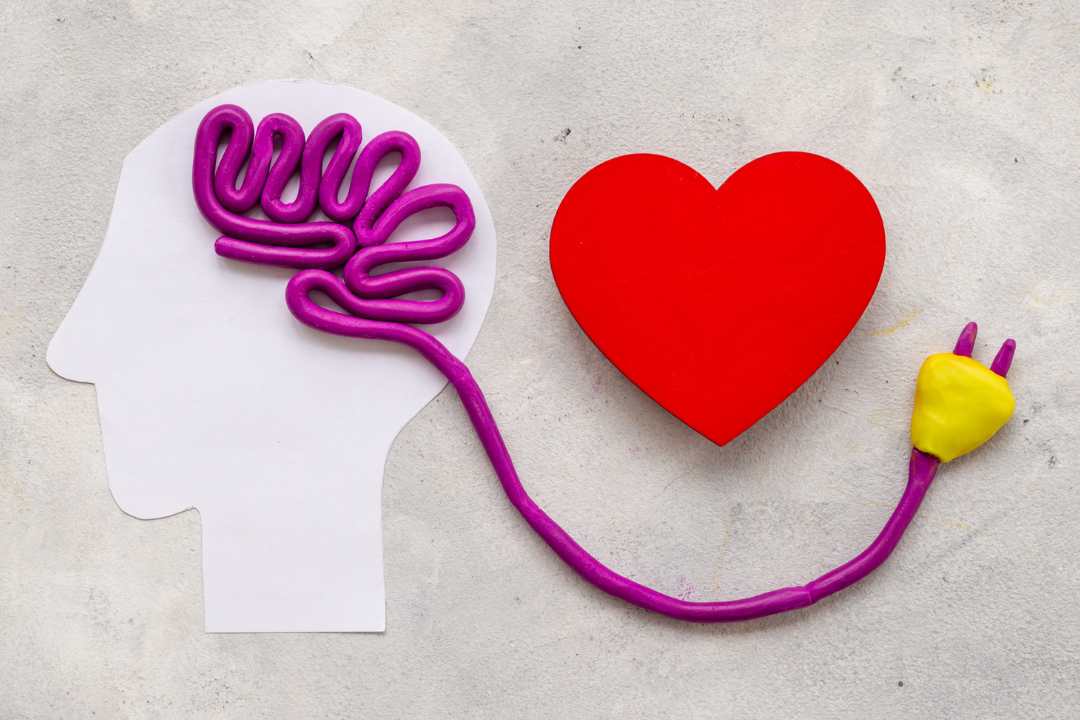Share This Story, Choose Your Platform!
Why Emotions Matter: The Brain’s Limbic System in Counselling
Our emotions play a fundamental role in how we experience the world. They guide our reactions, decisions, and relationships, often influencing our behaviour in ways we do not even fully understand. Central to this emotional world is the limbic system, a group of structures deep in the brain that governs our emotional responses. Understanding how the limbic system works can provide valuable insights into the counselling process and help us navigate the complexities of our feelings in a healthier way.
What is the Limbic System?
The limbic system is often referred to as the “emotional brain” because it regulates our feelings, motivations, and memory. It includes important structures such as the amygdala, hippocampus, and hypothalamus. Each of these parts plays a distinct role in how we perceive and react to emotions.
• Amygdala: Often considered the emotional alarm centre, the amygdala is responsible for detecting threats and triggering responses to fear or anxiety. It’s also involved in the processing of pleasure and other strong emotions.
• Hippocampus: This structure helps us form new memories and connect emotions to past experiences, which influences how we react emotionally in similar situations.
• Hypothalamus: While it helps regulate bodily functions, it also links the emotional experience with physical responses, such as changes in heart rate or blood pressure when we feel stressed or scared. These interconnected parts of the limbic system help shape how we respond to situations, whether it’s fear, anger, happiness, or even a sense of attachment to others.
The Limbic System and Emotional Responses
Emotions are powerful. When we encounter a stressful situation, our limbic system is activated almost immediately, triggering our fight-or-flight response. This automatic reaction can be helpful in life-threatening situations, but it can also cause us to react impulsively or irrationally when the stressor is less immediate or less severe. For example, you might feel your heart race when a deadline is approaching or when you have a difficult conversation with a loved one. Your limbic system is sending signals to your body that prepare you for action—an essential survival mechanism. However, in modern life, these reactions do not always serve us well. The challenge lies in learning to control these emotional reactions rather than letting them control us.
How Counselling Helps Manage the Limbic System
Counselling offers a unique opportunity to work with the emotional processes governed by the limbic system. Through counselling, individuals can better understand how their brain processes emotions and how they can work with their natural responses in healthier ways. Counsellors use various techniques to help clients regulate their emotional reactions, prevent knee-jerk responses, and create a more balanced emotional state. These include:
Mindfulness: Mindfulness techniques help individuals become more aware of their thoughts and emotions in the present moment without judgement. This practice calms the overactive amygdala by teaching clients to observe their feelings rather than react impulsively. In turn, this helps to restore emotional balance.
Emotional Awareness: Recognising and labelling emotions is a key part of managing them. By understanding what they are feeling and why, clients can create a greater sense of control over their emotional responses. This awareness also helps clients identify triggers and develop healthier coping strategies.
Cognitive Reframing: Cognitive-behavioural techniques, such as reframing, help individuals challenge negative or distorted thought patterns. By changing how we think about a situation, we can change how we feel. This helps quiet the emotional storm within the limbic system and encourages more balanced responses to stressors.
Relaxation Techniques: Practices like deep breathing, progressive muscle relaxation, and guided imagery can stimulate the parasympathetic nervous system, which helps counteract the stress response triggered by the limbic system. These techniques can calm the body and mind, making it easier for individuals to respond thoughtfully rather than react automatically.
The Emotional Roots of Behaviour
The limbic system does not just respond to immediate threats—it also plays a role in shaping our long-term emotional and behavioural patterns. Early experiences, particularly those involving attachment and emotional security, can shape how the limbic system responds to stress, relationships, and conflict later in life. For example, if a child experiences consistent emotional neglect or abuse, their limbic system might become more reactive to stress as they grow older. These early emotional experiences can create patterns of fear, anxiety, or defensiveness that continue into adulthood. In counselling, counsellors help individuals uncover these deep-rooted emotional responses, understand their origins, and work toward healing.
Approaches that are trauma-informed, attachment-based, and emotion-focused are all designed to help individuals process and regulate these emotional patterns. By understanding and addressing the emotional roots of behaviour, counselling helps individuals break free from unhealthy cycles and creates the space for emotional healing.
The Path to Emotional Balance
The limbic system is a powerful force in our lives, and counselling provides the tools to understand and manage its influence. By learning to regulate emotions, reframe negative thoughts, and practice mindfulness, individuals can achieve a sense of emotional balance that leads to healthier relationships, improved decision-making, and greater overall well-being. Counsellors play a crucial role in guiding clients through this process, helping them access the brain’s natural ability to heal itself. With the right support, anyone can learn to regulate their emotional responses and create lasting change in their mental and emotional health. Understanding the limbic system and its role in emotional regulation is not just about science—it is about empowering people to lead healthier, more fulfilling lives. Through counselling, individuals can transform their emotional patterns and, in turn, reshape their experience of the world.
Author: Mishka Kursen
Reference list:
Afshari, B., Hasani, J. (2020). RETRACTED ARTICLE: Study of Dialectical Behavior Therapy Versus Cognitive Behavior Therapy on Emotion Regulation and Mindfulness in Patients with Generalized Anxiety Disorder. Journal of Contemporary Psychotherapy, 50(1), 305-312. https://doi.org/10.1007/s10879-020-09461-9
Eppel, A. (2018). Understanding and Recognising Emotion. In A. Ellen, Short-Term Psychodynamic Psychotherapy. Springer. https://doi.org/10.1007/978-3-319-74995-2_3
Lawson-McConnell, R. A. (2018). The role of corrective emotional experiences in the counsellor-client attachment: a model for processing emotions in therapy. British Journal of Guidance & Counselling, 48(3), 303-313. https://doi.org/10.1080/03069885.2018.1461194
Malhotra, S., & Swapnajeet, S. (2017). Rebuilding the brain with psychotherapy. Indian Journal of Psychiatry, 59(4), 411-419. https://10.4103/0019-5545.217299
Messina, I., Sambin, M., Beschoner, P., & Viviani, R. (2016). Changing views of emotion regulation andneurobiological model of the mechanism of action of psychotherapy. Cognitive Affect Behavioural Neuroscience, 16(1), 571–587. https://doi.org/10.3758/s13415-016-0440-5
Meyers, J. E., & Jones, L. (). The Applications of Neuroscience to Clinical Mental Health Counselling. In J.S. Young & C. S. Cashwell (Eds.). Clinical Mental Health Counselling: Elements of Effective Practice. Springer. https://doi.org/10.4135/9781071801253.n16
Opialla, S., Lutz, J., Scherpiet, S., Hittmeyer, A., Jäncke, L., Rufer, M., Holtforth, M. G., Herwig, U., & A, B.(2015). Neural circuits of emotion regulation: a comparison of mindfulness-based and cognitive reappraisal strategies. European Archives of Psychiatry and Clinical Neuroscience, 265(1), 45-55.https://doi.org/10.1007/s00406-014-0510-z
Satchwell-Hirst, M. (2017). Neuroscience and Emotional Development: The Basics Explained. In D. Colley & P. Cooper. (Eds.), Attachment and Emotional Development in the Classroom: Theory and Practice (Vol.1, pp. 49-64). Jessica Kingsley Publishers.



